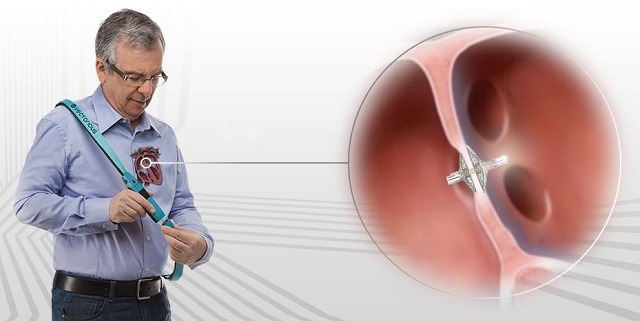
A review appearing in the Journal of the American College of Cardiology (JACC) has highlighted Vectorious Medical Technologies, an Israeli company developing the world’s first digital wireless sensory implant for measuring left atrial pressure (LAP; currently available CardioMEMS technology is analogue and measures pressure in the pulmonary artery.
The review discusses current and next-generation implantable haemodynamic monitors and how new approaches focused on the direct measurement of left atrial pressure, seek to expand the use of pressure-guided congestive heart failure management.
“Intracardiac and pulmonary artery pressure-guided management has become a focus of hospitalisation reduction in chronic heart failure,” write William T Abraham and Leor Perl. Abraham is from the Departments of Medicine, Physiology, and Cell Biology, Division of Cardiovascular Medicine, and the Davis Heart & Lung Research Institute, The Ohio State University, Columbus, USA. Perl is in the Cardiology Department, Rabin Medical Center, Petah Tikva, Israel; on the Sackler Faculty of Medicine, Tel Aviv University, Tel Aviv, Israel; and in the Division of Cardiovascular Medicine, Stanford University Medical Center, Stanford, USA.
Left atrial pressure, rather than pulmonary artery pressure, is a direct reflection of left ventricular filling pressure—which is the primary pressure target for chronic heart failure management. Therefore, its direct measurement may provide more clinical information than pulmonary artery pressure, according to the authors.

In the JACC review, Abraham and Perl say that chronic heart failure outcomes with CardioMEMS pulmonary artery pressure technology have been encouraging. They write that, additional, more technologically-advanced, implantable haemodynamic monitoring systems are in development, and newer approaches to the use of these data (such as a physician-directed, patient self-management approach) may yet again revolutionise the management of patients with heart failure.
“As a clinician and a potential patient in the future—as we all are—we are facing exciting times,” Perl says. “Many chronic conditions like chronic heart failure, that once necessitated admission to the hospital, could be treated at home. Because information on the advancement of the disease precedes conventional symptoms by days and even weeks, patients could have more control over their condition and be able to avoid unnecessary hospital admissions.”












